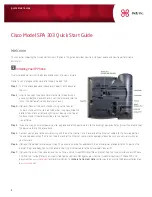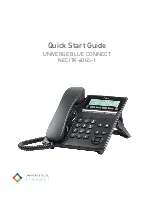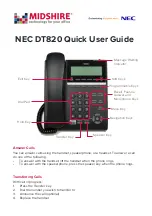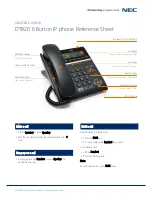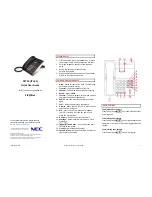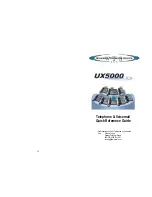
118
perfect opportunity to be a “Good
Samaritan” in your community. If
you see an auto accident, crime in
progress or other serious
emergency where lives are in
danger, call 911 or other local
emergency number, as you would
want others to do for you.
10. Call roadside assistance or a
special wireless non-emergency
assistance number when
necessary. Certain situations
you encounter while driving may
require attention, but are not
urgent enough to merit a call for
emergency services. But you
can still use your wireless phone
to lend a hand. If you see a
broken-down vehicle posing no
serious hazard, a broken traffic
signal, a minor traffic accident
where no one appears injured or
a vehicle you know to be stolen,
call roadside assistance or other
special non-emergency wireless
number.
The above tips are meant as
general guidelines. Before
deciding to use your mobile
device while operating a vehicle,
it is recommended that you
consult your applicable
jurisdiction’s local laws or other
regulations regarding such use.
Such laws or other regulations
may prohibit or otherwise
restrict the manner in which a
driver may use his or her phone
while operating a vehicle.
Consumer Information
on SAR
(Specific Absorption Rate)
This model phone meets the
government’s requirements for
exposure to radio waves.
Your
wireless phone is a radio transmitter
and receiver. It is designed and
manufactured not to exceed the
emission limits for exposure to
radiofrequency (RF) energy set by
the Federal Communications
Commission (FCC) of the U.S.
Government. These FCC exposure
limits are derived from the
recommendations of two expert
organizations, the National Counsel
on Radiation Protection and
Measurement (NCRP) and the
Institute of Electrical and Electronics
Engineers (IEEE). In both cases, the
recommendations were developed
by scientific and engineering experts
drawn from industry, government,
and academia after extensive reviews
of the scientific literature related to
the biological effects of RF energy.
The exposure limit for wireless
mobile phones employs a unit of
measurement known as the Specific
Absorption Rate, or SAR. The SAR is
a measure of the rate of absorption
of RF energy by the human body
extouched in units of watts per
kilogram (W/kg). The FCC requires
wireless phones to comply with a
safety limit of 1.6 watts per kilogram
(1.6 W/kg). The FCC exposure limit
incorporates a substantial margin of
safety to give additional protection to
Safety































